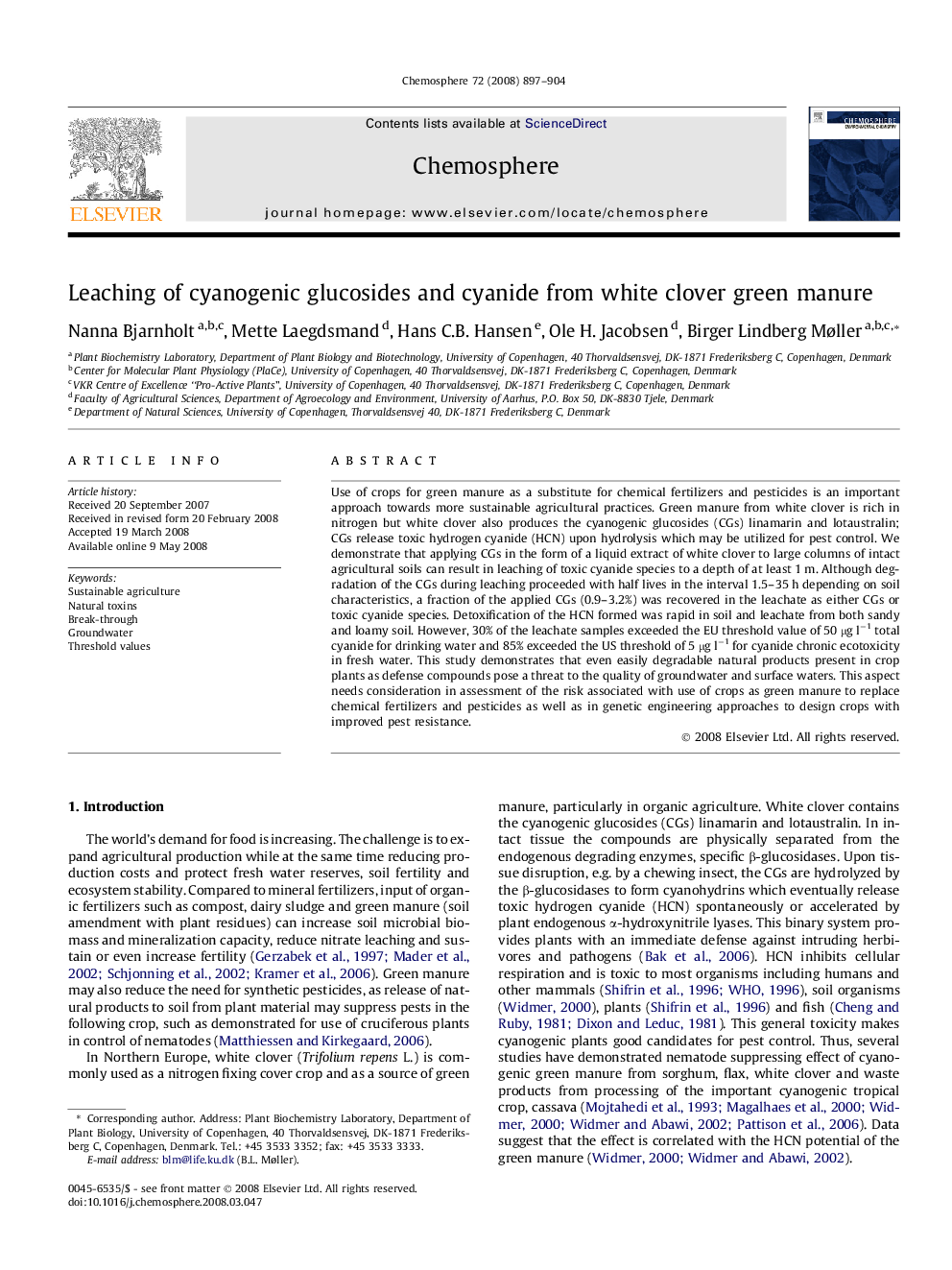| Article ID | Journal | Published Year | Pages | File Type |
|---|---|---|---|---|
| 4414095 | Chemosphere | 2008 | 8 Pages |
Abstract
Use of crops for green manure as a substitute for chemical fertilizers and pesticides is an important approach towards more sustainable agricultural practices. Green manure from white clover is rich in nitrogen but white clover also produces the cyanogenic glucosides (CGs) linamarin and lotaustralin; CGs release toxic hydrogen cyanide (HCN) upon hydrolysis which may be utilized for pest control. We demonstrate that applying CGs in the form of a liquid extract of white clover to large columns of intact agricultural soils can result in leaching of toxic cyanide species to a depth of at least 1 m. Although degradation of the CGs during leaching proceeded with half lives in the interval 1.5-35 h depending on soil characteristics, a fraction of the applied CGs (0.9-3.2%) was recovered in the leachate as either CGs or toxic cyanide species. Detoxification of the HCN formed was rapid in soil and leachate from both sandy and loamy soil. However, 30% of the leachate samples exceeded the EU threshold value of 50 μg lâ1 total cyanide for drinking water and 85% exceeded the US threshold of 5 μg lâ1 for cyanide chronic ecotoxicity in fresh water. This study demonstrates that even easily degradable natural products present in crop plants as defense compounds pose a threat to the quality of groundwater and surface waters. This aspect needs consideration in assessment of the risk associated with use of crops as green manure to replace chemical fertilizers and pesticides as well as in genetic engineering approaches to design crops with improved pest resistance.
Related Topics
Life Sciences
Environmental Science
Environmental Chemistry
Authors
Nanna Bjarnholt, Mette Laegdsmand, Hans C.B. Hansen, Ole H. Jacobsen, Birger Lindberg Møller,
